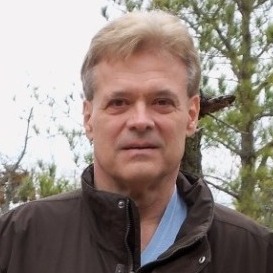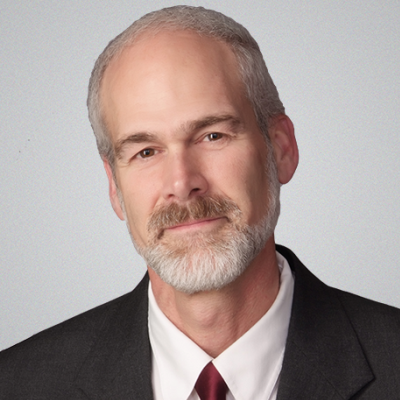|
< Return to program
Stormwater Management
Improving Water Quality Using Restoration and Preservation Techniques
Andrew Der, Sean Flynn, Santosh Devkota, and Tom Graupensperger
Monday, May 20
International Room
2:15 PM
About the Session
As urban populations expand and land development increases, it is critical to identify opportunities to protect and improve water quality. This session will draw on experiences within the Mid-Atlantic Region to demonstrate how a holistic approach to planning and development can improve water quality by balancing growth, natural resource protection, stormwater management, and restoration efforts.
About the Presenters
|
 Andrew Der Andrew Der
With a total of 30 years experience working within the Chesapeake Bay watershed, Andrew Der is currently principal of Andrew T. Der and Associates, LLC practicing in the water resources consulting industry regionally and nationally since 2013. Prior to that, Mr. Der was Director of Environmental Services for two civil engineering firms, and previously completed 18 years of service at the Maryland Department of the Environment leaving as a manager in the Wetlands and Waterways Program. His specialties include regulation, environmental assessment and watershed studies, advocacy, compliance, permitting, feasibility studies, nonpoint source pollutant management, wetland and stream mitigation, water quality monitoring, NEPA, NPDES, and TMDL. Mr. Der also teaches seminars, publishes industry-related and natural resources articles, a member of several industry and citizen advisory committees, recipient of numerous awards of recognition, and provides expert testimony
|
|
 Sean Flynn Sean Flynn
Sean Flynn is a Professional Engineer and alumnus of Drexel University working within the Water Resources group at AKRF. He has 6 years of experience across the fields of land development, site/civil engineering, stormwater management, green stormwater infrastructure, and erosion and sediment pollution control. Sean has worked on a variety of projects, ranging from cutting-edge hospitals to innovative stormwater management forests. Sean’s rooted interest in the interactions between infrastructure and nature drive his motivation within the profession of water resources.
Sean’s hometown is Wyoming, Pennsylvania, roughly 10 miles south of Scranton, for anyone familiar with “The Office”. Philadelphia has been his home since his studies at Drexel University and continuing through his professional career. At Drexel University, Sean was involved with the Sustainable Water Research Engineering Laboratory and assisted with the monitoring of New York City’s Jacob J. Javits Convention Center green roof of approximately 300,000 square feet, the second largest green roof in North America. Throughout Sean’s professional career, his favorite projects are related to water resources. Most Notably, a river realignment to mitigate contaminated sediment transport, and stormwater management and reuse systems. At AKRF, Sean and the Water Resources team have worked in the Greater Philadelphia area, Washington D.C., Maryland, and the Midwest United States on green stormwater infrastructure and regenerative stormwater conveyance projects.
Outside of work, you can find Sean enjoying waterfront parks, cheering on the Eagles, and riding his bike throughout the City of Brotherly Love.
|
|
 Santosh Devtoka Santosh Devtoka
Santosh Devkota is a Senior Professional at AKRF with 10 years of experience in hydrologic and hydraulic modeling, engineering design of stream/wetland restoration, and environmental permitting. His experience also comprises site/civil infrastructure designs, both nationally and internationally. Mr. Devkota has a wide range of technical expertise including data collection, fluvial geomorphic assessments, hydrologic and hydraulic analysis, stormwater and drainage design, green stormwater infrastructure design, erosion and sediment control design, geotechnical subsurface investigation, environmental compliance, Geographic Information System (GIS) and remote sensing. Santosh has worked on a variety of water resources engineering projects ranging from hydropower plant design to ESD micro-bioretention designs. At AKRF, Santosh and the Water Resources team have worked closely with clients in Greater Philadelphia, Washington D.C., Maryland, Harrisburg and New York on green stormwater infrastructure and stream/wetland restoration projects.
Santosh is originally from Nepal was raised in the capital city-Kathmandu. He completed his MS from New Mexico State University. During his MS degree, Santosh was involved in the evapotranspiration/lake evaporation research throughout the Rio Grande basin. He also taught a full undergraduate course on Hydraulic Engineering for three consecutive semesters. In addition to that, Santosh volunteered to mentor high school students from minority communities as a part of NMSU alliance for minority participation program, provided GIS instruction during Bureau of Indian Affairs Water Resource Training at NMSU summer 2010.
Santosh likes travelling, reading and playing soccer. He plans to hike up to the Everest Base camp one day.
|
|
 Tom Graupensperger Tom Graupensperger
Thomas A. Graupensperger, Senior Environmental Scientist at Dewberry, has more than 39 years of experience in environmental and ecological restoration. He oversees a broad range of environmental/water related services including: MS4 compliance support; transportation environmental impact documentation and permitting; wetlands mitigation and replacement design; stream restoration and stabilization design; watershed management and pollution reduction planning; and green stormwater infrastructure design and implementation.
Tom holds a BS in Environmental Resources Management from Pennsylvania State University, is Rosgen Level 4 certified and has designed, coordinated the development and implementation of plans, specifications & cost estimates and overseen construction of approximately 6.9 miles of Natural Channel Stream Restoration on 36 separate stream reaches, more than 240 acres of floodplain wetlands and approximately 82 separate stormwater BMPs/SCMs.
|
|

 Sean Flynn
Sean Flynn Santosh Devtoka
Santosh Devtoka Tom Graupensperger
Tom Graupensperger

